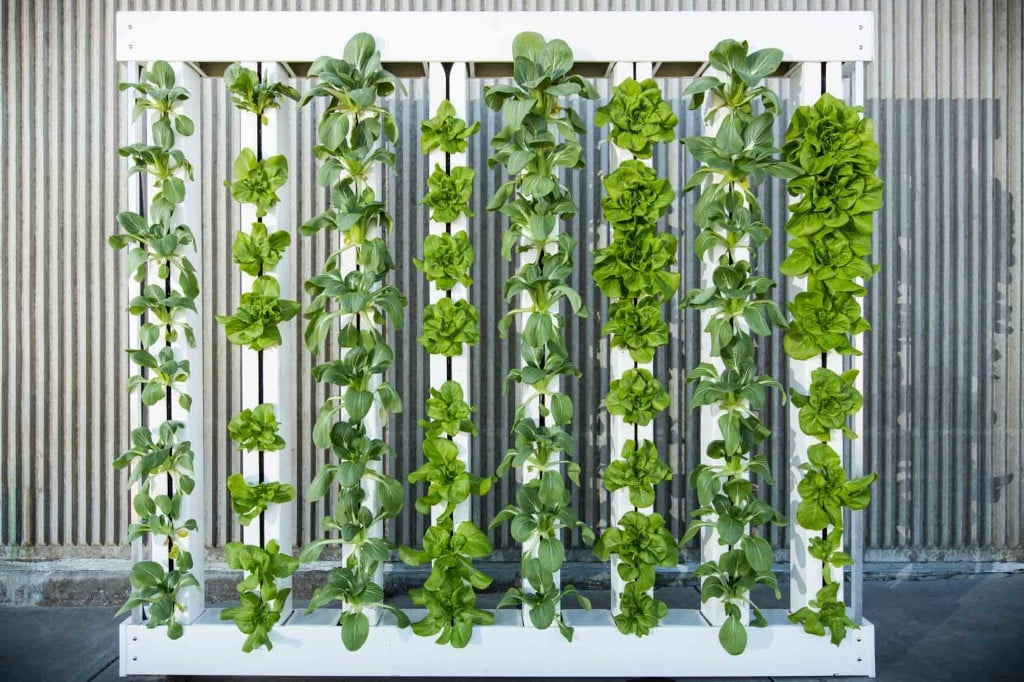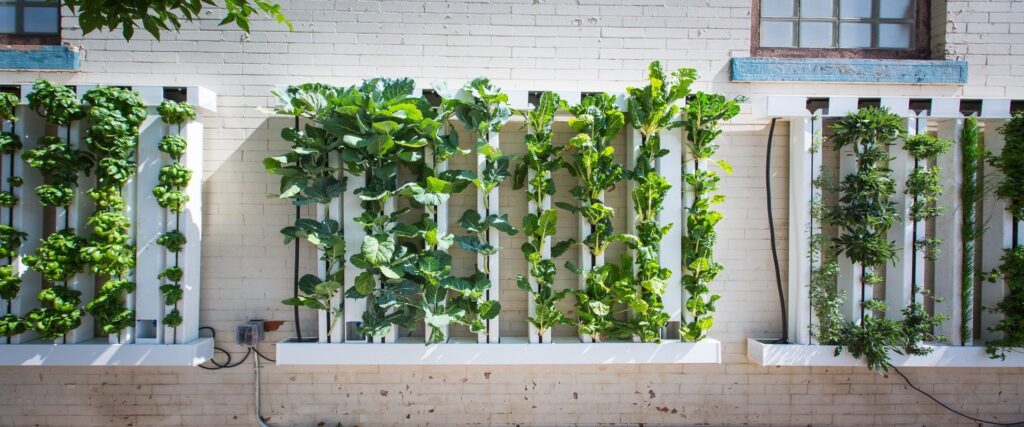The living wall isn’t a new idea
Dreams of living walls have enchanted the peoples of the world for ages.
The Hanging Gardens of Babylon and the green facades of the 19th century were only the first steps in our journey to a widely viable green wall.
In the last few decades, people like Stanley Hart White and Patrick Blanc have brought us even further in that journey.
Today, most living green walls are built using one of three traditional methods:
1) Soil cells
2) Growing Mats
3) Trellising
1) Soil Cell Green Walls
One method is using small soil pots (or another kind of soil cell) on trays that are stacked using a frame that is built into the wall. (Or by bolting the cells to the wall itself- one example is VersaWall) It looks good, but the cost is high.
Most of these systems require that you change your wall to hold the frame or the weight of the bolted cells.
Maintenance for soil cells is inconvenient and requires lots of time. When you water, the weight of the wall will increase drastically. Can your building support the weight?
A way to counteract the weight problem is to reduce watering- but this also limits the type of plants you use to some succulents and air plants.
2) Growing Mat Green Walls
Another method is using growing mats.
Many hydroponic green wall designs employ this method.
As with the cell method, mats usually require that the building is fortified, reinforced, or even built specially to facilitate the green wall. Most mats that you’ll encounter consist of felts and plastic liners, often structured like pockets.
3) Trellising Green Walls
A third method, used mostly for building facades or patio spaces, is to trellis with a climbing crop and either a rigid trellis or a cable network.
This method took off in 19th century Europe with green facades on the faces of homes.
Common vines used for trellising are ivy, Virginia creeper, or grapevine.
Can a living wall do more than beautify a space?
Are these types of green walls beautiful?
Oh yeah. They’re breathtaking!
But, here’s the problem: on average, the cost of building a green wall by one of these methods is $120 per square foot. And while beautiful, most modern green walls are just aesthetic pieces.
For years now, we’ve been realizing the potential and versatility of our relatively simple technology. Our ZipGrow towers have enabled thousands of small and big growers alike to reduce costs while making the most of their space.
The ZipGrow™ Tower isn’t just for greenhouse and indoor production, however. It’s also a disruptive technology for living, breathing, food-producing green walls.
Beauty + Food + Easy to Use = ZipGrow Farm Wall™
ZipGrow™ Farm Walls are lightweight and need no additional support or special building design.
We designed our green wall around our fundamental design philosophy (i.e. simple, accessible and flexible to the user’s needs).
In that sense, this living wall is easy to install and inexpensive to maintain.







